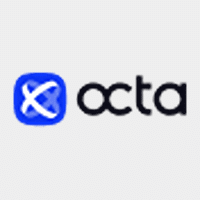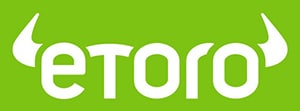Currencies always trade in pairs because the value of each currency is measured against that of another currency, yielding a rate of exchange for the currency pair. Furthermore, most currencies have been primarily traded against the U.S. Dollar for historical reasons described in further detail below.
The Continuing Influence of Bretton Woods
The primary reason that most currencies trade in the forex market against the U.S. Dollar goes back to Bretton Woods agreement made near the end of the Second World War.
After that devastating global war, the United States was the only major country which emerged relatively strong economically after the costly conflict compared to the other significant nations of the world.
Despite proposals for the creation of a neutral global reserve currency called the bancor, pressures prevailed for the U.S. Dollar to be chosen as the world’s reserve currency at the Bretton Woods conference held in New Hampshire in 1944, just before the end of the war.
When implemented post war, this Bretton Woods system of fixed exchange rates pegged major world currencies to the U.S. Dollar, which at that time was still on the gold standard, and fixed the price of gold at $35 per ounce.
After 1971, when U.S. President Richard Nixon unilaterally stopped the Dollar’s convertibility to gold, virtually all nations with the exception of Switzerland went off this de facto gold standard. Switzerland also eventually stopped the convertibility to gold of the Swiss Franc in 2000.
Related Articles
Major Currency Pairs All Quoted Against The U.S. Dollar
The seven most actively traded currency pairs currently trading in the foreign exchange market, also known as the Majors all trade against the U.S. Dollar.
These include the following pairs ordered by trading volume:
- E.U.’s Euro versus the U.S. Dollar: EUR/USD
- U.S. Dollar versus the Japanese Yen: USD/JPY
- U.K.’s Pound Sterling versus the U.S. Dollar: GBP/USD
- U.S. Dollar versus the Swiss Franc: USD/CHF
- Australian Dollar versus the U.S. Dollar: AUD/USD
- U.S. Dollar versus the Canadian Dollar: USD/CAD
- New Zealand Dollar versus the U.S. Dollar: NZD/USD
As mentioned above, the U.S. Dollar has historically been the most traded currency in its role as the world’s primary reserve currency. The Dollar continues being important, with over 86% of all forex trades still involving the currency.
Some major currency pairs and just about all minor currency pairs are quoted with the U.S. Dollar as the base currency, such as USD/JPY, USD/CAD and USD/CHF. These quotations are sometimes referred to as direct rates since the country’s home currency is used as the pricing currency.
Furthermore, currency pairs where the U.S. Dollar acts as the counter currency such as EUR/USD, GBP/USD, AUD/USD and NZD/USD use the country’s home currency as the pricing currency, and so quotations in these pairs are sometimes referred to as indirect rates.
Specific Major Currency Pairs Described
Each currency pair has its own characteristics and behaves as a unique trading instrument. These details should be researched thoroughly before attempting to trade a currency pair.
A brief description of each of the major currency pairs follows:
- EUR/USD: EUR/USD makes up the overall volume leader in the foreign exchange market, and this currency pair accounts for over 27% of overall daily forex trading volume according to the Bank for International Settlements or BIS. The Eurozone countries that consolidated their national currencies into the Euro together make up the largest economy in the world by GDP, with the United States in second place.
- USD/JPY: The Dollar Yen rate accounts for over 13% of total daily forex volume and is the second most actively traded currency pair. While being a small country, the Japanese economy is the third largest in the world by GDP. The United States and the European Union are Japan’s largest trading partners.
- GBP/USD: The U.K. Pound Sterling versus the U.S. Dollar rate has been nicknamed Cable since the late 1800s and is the third most actively traded currency pair with 13% of total daily forex volume and the U.K. coming in number six in economic size by GDP. This currency pair is susceptible to considerable rate swings and so is not recommended for novice traders.
- USD/CHF: Widely still considered a safe haven currency due to its former convertibility into gold that was suspended in 2000, the Swiss Franc now accounts for only 5% of total forex daily trading volume. The reason the currency goes by the ISO 4217 symbol CHF is that it derives from the old Latin name of Switzerland: Confederacion Helvetia Franc.
- AUD/USD: This currency pair values the Australian Dollar against the U.S. Dollar. Nicknamed the Aussie, It trades closely with the commodities market because Australia’s economy is primarily based on the export of natural resources. Australia’s economy is the 13th largest in the world and its chief trading partner is China, which buys the bulk of Australian exports.
- USD/CAD: Another commodity-linked currency, the U.S. Dollar versus the Canadian Dollar exchange rate tends to be sensitive to the price of oil since Canada exports oil and the U.S. imports it.
- NZD/USD: Also sometimes trading along with commodity prices, the New Zealand Dollar versus the U.S. Dollar or the Kiwi has become a popular currency pair for speculators to trade, despite the fact that New Zealand has a rather small economy.
Further reading:
The strategic importance of the US dollar.
What makes the dollar the reserve currency of the world?
Learn more about major currency pairs.
The Best Forex Demo Accounts
To master the Alligator trading strategy it is important that you practice it. Reading the signals the indicator correctly timing your entry and exit points are skills that need to be mastered in order to maximise your profits. This is where a forex demo account comes in: It allows you to practice your new strategy without risking any of your hard-won capital. Below we have picked out some of our favourite forex demo accounts to help you out.
| Broker | Features | Regulator | Platforms | Next Step | |
|---|---|---|---|---|---|
 Your capital is at risk
Founded: 2014 Your capital is at risk
Founded: 2014 |
|
FSPR | MT4 | ||
 Your capital is at risk
Founded: 2006 Your capital is at risk
Founded: 2006Europe* CFDs ar... |
|
ASIC, FSA, FSB, MiFID | MetaTrader4, Sirix, AvaOptions, AvaTrader, Mirror Trader | ||
 Between 74-89% of CFD traders lose
Founded: 2010 Between 74-89% of CFD traders lose
Founded: 2010Between 74-89 % of retail investor accounts lose money when trading CFDs |
|
ASIC, FCA | MetaTrader 4, MetaTrader 5, cTrader | ||
 Your capital is at risk
Founded: 2011 Your capital is at risk
Founded: 2011 |
|
CySEC, FSCA, MISA | MT4, MT5, OctaTrader | ||
 51% of eToro CFD traders lose
Founded: 2007 51% of eToro CFD traders lose
Founded: 200751% of eToro retail investor accounts lose money when trading CFDs with this provider. You should consider whether you understand how CFDs work, and whether you can afford to take the high risk of losing your money. |
|
ASIC, CySEC, FCA | eToro Platform | ||
 Your capital is at risk
Founded: 2009, 2015, 2017 Your capital is at risk
Founded: 2009, 2015, 2017 |
|
ASIC, CySEC, IFSC | MT4 Terminal, MT4 for Mac, Web Trader, iPhone/iPad Trader, Droid Trader, Mobile Trader, MT5 | ||
 Your capital is at risk
Founded: 2006 Your capital is at risk
Founded: 2006 |
|
CySEC, DFSA, FCA, FSB, SIA | MetaTrader4, MetaTrader5, cTrader, FxPro Edge (Beta) | ||
Forextraders' Broker of the Month
BlackBull Markets is a reliable and well-respected trading platform that provides its customers with high-quality access to a wide range of asset groups. The broker is headquartered in New Zealand which explains why it has flown under the radar for a few years but it is a great broker that is now building a global following. The BlackBull Markets site is intuitive and easy to use, making it an ideal choice for beginners.
